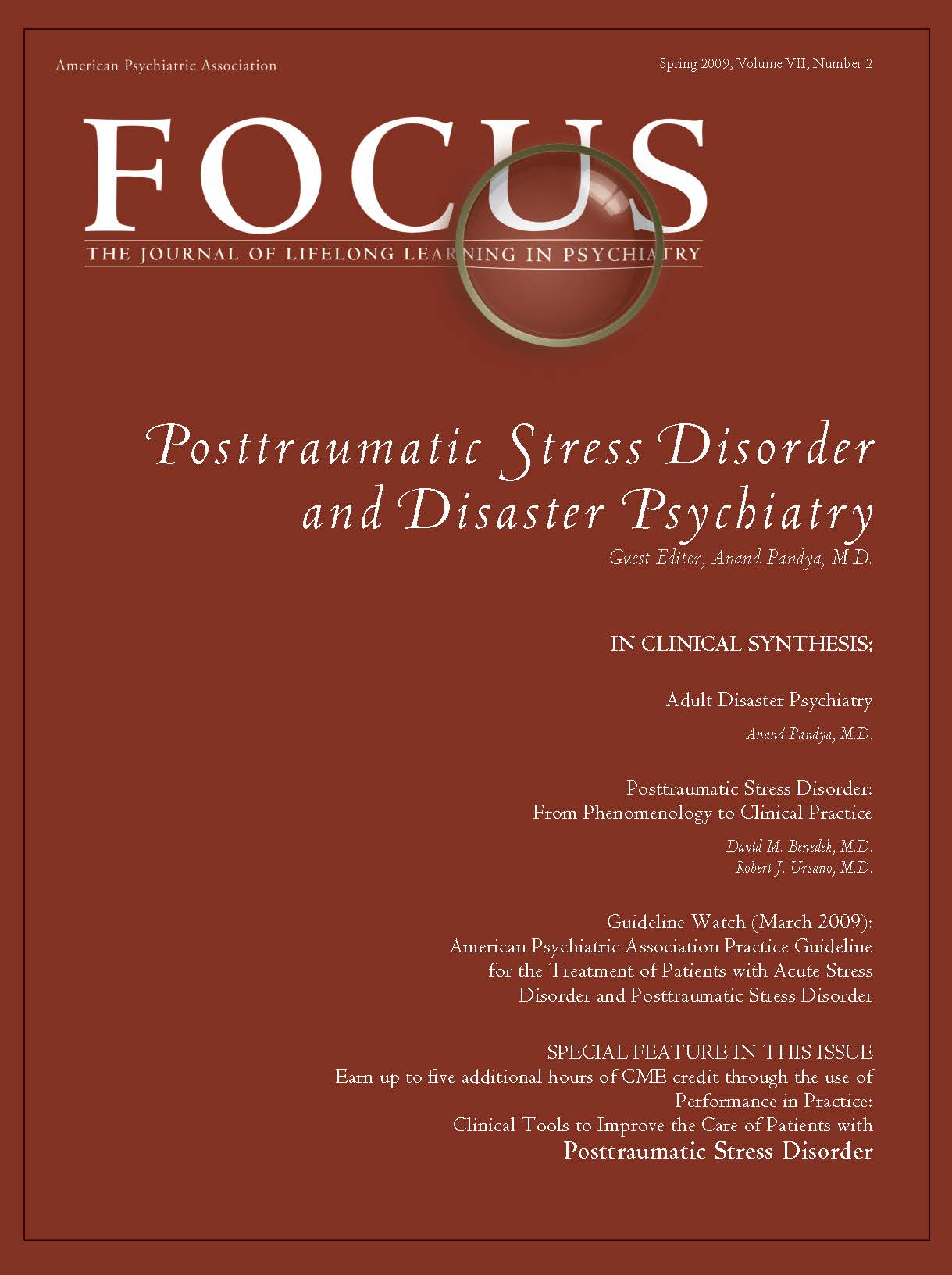From the Guest Editor
In 2009, with the United States in two wars and the economy in crisis, it behooves American psychiatrists to review the growing literature on how disasters psychologically affect a population. Benjamin Rush, the father of American psychiatry and a Founding Father of our nation, would appreciate the significant progress that has been made in the field of disaster psychiatry since he cared for the sick of the Yellow Fever Epidemic of 1793. That was one of the most devastating epidemics in the history of this country, killing 1 in 10 residents of Philadelphia, which was then the nation's capital. Since that time, through the development of the diagnosis of posttraumatic stress disorder in the aftermath of the Vietnam War and the modern study of the psychological effects of bioterrorism, American psychiatrists have returned again and again to care for those affected by massive trauma. Of course, we hope that there will be no future disasters and that we will not need to refer to this growing body of literature, but history teaches us that we are wise to be prepared for the worse.
SPECIAL FEATURE IN THIS ISSUE
Earn up to five additional hours of CME credit through the use of
Performance in Practice Tool for PTSD
Performance in Practice:
Clinical Tools to Improve the Care of Patients with
Posttraumatic Stress Disorder



